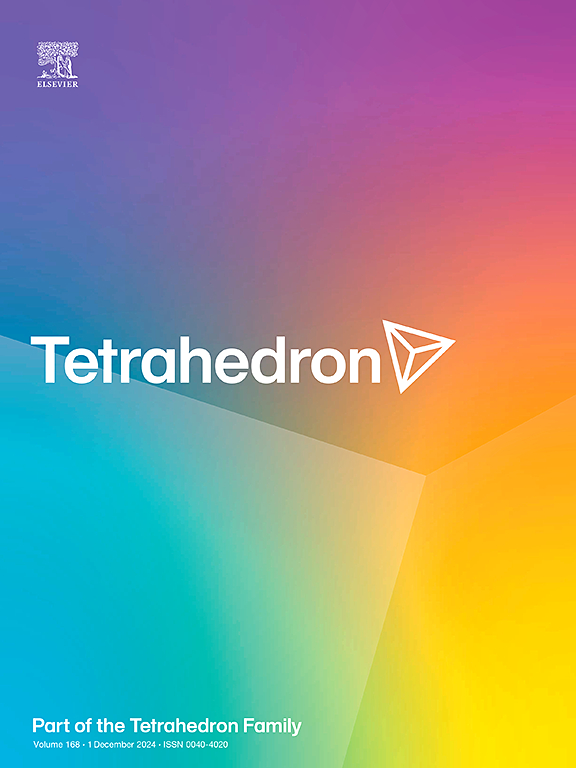Design and synthesis of s-triazine-Isatin hybrids with potent anticancer activity, targeting A549 lung adenocarcinoma via EGF inhibition
IF 2.1
3区 化学
Q2 CHEMISTRY, ORGANIC
引用次数: 0
Abstract
Merging s-triazine and isatin via a hydrazone linkage an efficient strategy to access new potential anticancer derivatives. Consequently, herein we report a new library of fifty new compounds based on isatin-s-triazine hydrazone derivatives. We used a straightforward orthogonal synthetic pathway to prepare disubstituted s-triazine hydrazine derivatives, whose basic structure was modified and then condensed with substituted isatin at the C-5 position to afford the new library of isatin-s-triazine hydrazone derivatives. The newly synthesized compounds were fully characterized by 1H NMR, 13C NMR and elemental analysis. The synthesized compounds were evaluated for their antiproliferative activity against lung cancer cell line (A549), and safety profile against Human Caucasian foetal lung (WI-38). The results revealed that all tested compounds exhibited cytotoxic effects against A549 when compared to the reference drug sorafenib. Most of the tested compounds exhibited safety indices that were either equivalent to or higher than sorafenib's index of 11.025, highlighting their superior or comparable safety profiles. Notably, compounds 9a, 9d, 10d, 13a, 13d, 14a-14e, 15a, 15b, 15d, 15e, and 11a-11e exhibited particularly promising safety profiles. However, in terms of selectivity, compounds 6a-6e, 7a-7e, 8a-8e, 10d, 12d, 13a, 13d, 14a, 14d (with the highest selectivity index), 11c, and 11d, 14e, 15a, 15b, 15d, and 15e showed greater potency than sorafenib, as evidenced by selectivity indices exceeding 1. In addition, all compounds demonstrated broad-spectrum anti-trypsin properties, five compounds (7c, 8a, 12d, 13a, and 13d) exhibited promising anti-trypsin effects at their anticancer IC50 values (97.912 ± 12.14, 93.511 ± 10.32, 99.623 ± 14.71, 98.411 ± 25.3, and 75.123 ± 4.32, respectively), while 7c, 8a, 12d and 13a showed the highest inhibitory effect, surpassing the inhibitory effect of bis(5-amidino-2-benzimidazolyl)methane (IC50 = 56.617 ± 2.14). When compared to the inhibitory effect of rivaroxaban (53.223 ± 0.98) at a concentration of 0.0013 μM against Factor Xa, all compounds showed lower inhibitory effects except for 6b, 6c, 7a,7e, 8a, 8b, 8c, 8e, 9b, 9c, 9d, 10a, 11a, 12a, 13a, and 14a showed the highest inhibitory effect. Furthermore, all compounds acted as epidermal growth factor (EGF) inhibitors to varying degrees. Compared to the IC50 of Sorafenib (68.2 % inhibitory effect), several compounds exhibited potentially greater potency as EGF inhibitors, with more potent inhibitory effects at their IC50 values compared to sorafenib. These compounds include 7c, 10b, 10c, 10d, 10e, 12d, 12e, 14b, 14c, 15a-15e, 11b, 11d, and 11e. All the compounds that demonstrated superior EGF inhibition in vitro were selected and upon docking showed both higher docking scores and free binding energies (−9.728: 6.890 & −51.49: 40.74, respectively) compared to Sorafenib −4.649 and −34.96 respectively.

求助全文
约1分钟内获得全文
求助全文
来源期刊

Tetrahedron
化学-有机化学
CiteScore
3.90
自引率
4.80%
发文量
439
审稿时长
34 days
期刊介绍:
Tetrahedron publishes full accounts of research having outstanding significance in the broad field of organic chemistry and its related disciplines, such as organic materials and bio-organic chemistry.
Regular papers in Tetrahedron are expected to represent detailed accounts of an original study having substantially greater scope and details than that found in a communication, as published in Tetrahedron Letters.
Tetrahedron also publishes thematic collections of papers as special issues and ''Reports'', commissioned in-depth reviews providing a comprehensive overview of a research area.
 求助内容:
求助内容: 应助结果提醒方式:
应助结果提醒方式:


